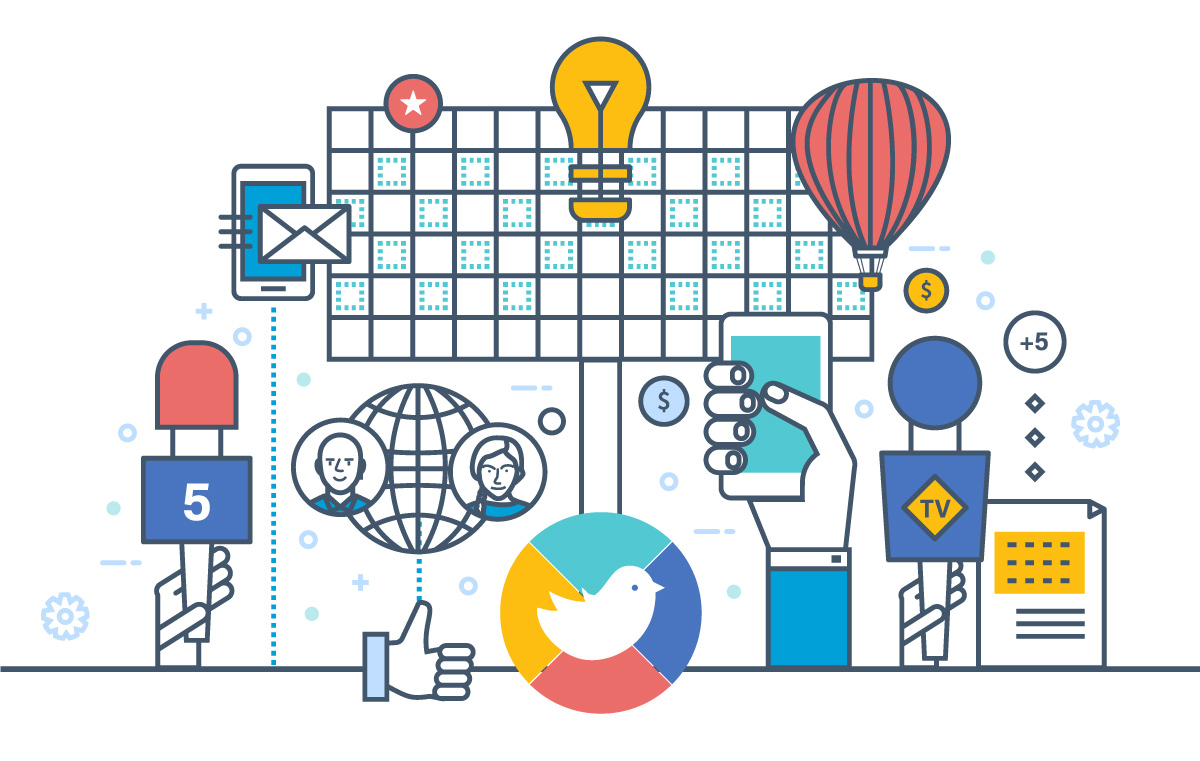
In today’s fast-paced digital landscape, businesses need more than just a presence online; they need to engage, convert, and retain customers effectively to achieve a high return on investment (ROI). Digital advertising has become a vital tool for businesses looking to reach a targeted audience, but maximizing ROI requires strategy, analytics, and adaptability. Here’s a comprehensive guide to help you optimize your digital advertising efforts and maximize ROI.
1. Set Clear, Measurable Goals
The first step to any successful digital advertising campaign is to establish clear, specific goals. Goals can vary widely depending on the business, but some common examples include:
- Increasing brand awareness
- Driving website traffic
- Generating leads and conversions
- Building customer engagement
Set quantifiable goals using key performance indicators (KPIs) such as click-through rate (CTR), cost per acquisition (CPA), or return on ad spend (ROAS). Clear goals allow you to tailor your strategies and better evaluate the campaign’s success.
2. Know Your Audience Inside and Out
Understanding your target audience is the foundation of a high-ROI digital ad campaign. Use data-driven insights to build a customer persona that includes demographics, behavior patterns, interests, and preferences. You can gather this data from:
- Customer surveys and feedback
- Website analytics
- Social media insights
- CRM systems
With this data, you can ensure that your ads are personalized and relevant, resulting in better engagement and conversion rates.
3. Choose the Right Platforms
Not all digital advertising platforms are equally effective for every business. Selecting the right platform depends on your audience and goals. Here’s a quick overview of popular platforms and their strengths:
- Google Ads: Great for search-driven intent and driving website traffic. Works well for businesses with clear demand.
- Facebook and Instagram Ads: Ideal for targeting based on interests and demographics. Best for engaging visual content.
- LinkedIn Ads: Effective for B2B marketing and professional networking.
- YouTube Ads: Good for brands with compelling video content. Excellent for brand awareness and product demos.
- Twitter Ads: Useful for real-time engagement and trending topics.
By focusing on the most effective platforms for your audience, you can make the most out of your advertising budget.
4. Leverage Targeted Advertising Options
Most digital platforms offer advanced targeting features that allow you to narrow down your audience based on various factors, such as location, age, interests, and online behavior. This approach, known as targeted advertising, helps increase relevance and engagement with your ads.
Additionally, consider remarketing or retargeting strategies, where ads are shown to users who have previously visited your website or interacted with your content. Remarketing can improve conversion rates by reminding interested users to take action.
5. Optimize Your Ad Copy and Creatives
Effective ad copy and visuals are essential to capturing your audience's attention and driving action. Here are some tips for crafting compelling ads:
- Keep headlines short and catchy: Aim for headlines that grab attention and clearly state the benefit.
- Use strong calls-to-action (CTAs): Words like "Shop Now," "Get Started," or "Learn More" create urgency.
- Highlight unique selling points: Focus on what sets your product or service apart.
- Use high-quality visuals: Ensure images and videos are high-resolution and relevant to the message.
- A/B test your ads: Try different versions of your ad copy, headlines, and visuals to see what performs best.
Testing and refining your creatives can lead to more effective ads and better ROI over time.
6. Allocate Your Budget Wisely
Budget allocation can make or break a digital ad campaign. Start by assigning budgets based on priority goals, but remain flexible as you assess which ads are yielding the highest ROI. Here’s a suggested approach:
- Use cost-effective platforms for brand awareness: Social media platforms like Facebook and Instagram are affordable options to boost brand awareness.
- Increase budget on high-performing campaigns: Continuously monitor performance and reallocate funds to the top-performing ads.
- Plan for seasonality and trends: Budget extra funds during peak seasons or holidays if your business is affected by these factors.
Regular budget analysis allows you to direct resources where they’ll have the most impact.
7. Track and Analyze Your Campaigns
Data analysis is a critical component of maximizing ROI in digital advertising. Use analytics tools like Google Analytics, Facebook Ads Manager, and LinkedIn Campaign Manager to track your KPIs. Here are some metrics to focus on:
- Click-Through Rate (CTR): Measures how often people who see your ad end up clicking it.
- Conversion Rate: Tracks how many clicks result in the desired action, like a purchase or sign-up.
- Cost Per Click (CPC) and Cost Per Acquisition (CPA): Help measure ad spend efficiency.
- Return on Ad Spend (ROAS): Indicates the revenue generated for every dollar spent on ads.
Regular analysis allows you to fine-tune your campaigns and make data-driven decisions.
8. Optimize Through Automation
Automation in digital advertising can save time and improve efficiency. Platforms like Google Ads and Facebook Ads offer automation tools that can help you optimize ad delivery, bidding, and audience targeting. Some useful automated tools include:
- Automated bidding: Adjusts your bids to maximize clicks, conversions, or visibility.
- Dynamic ads: Automatically generates personalized ads based on user data and behavior.
- Automated reporting: Tracks key metrics and sends reports to help you monitor performance over time.
Automation allows you to focus on strategy while the system handles repetitive tasks, improving overall ROI.
9. Experiment with Emerging Trends
The digital advertising landscape is constantly evolving. Experiment with trends such as video ads, shoppable social media posts, interactive content, and artificial intelligence (AI)-driven ads. These strategies can boost engagement and attract new customers, especially if your target audience is tech-savvy or highly engaged on social platforms.
By staying adaptable and testing new approaches, you can stay ahead of the competition and drive better results from your campaigns.
10. Continuously Improve Through Testing and Iteration
Finally, continuous improvement is key to maximizing ROI. Digital advertising is not a set-it-and-forget-it endeavor. Regularly A/B test new ad formats, creatives, and audience segments. Conduct weekly or bi-weekly reviews of your campaign performance and adjust strategies based on your findings.
Small, incremental improvements over time can lead to significant ROI growth and better campaign results.
Conclusion
Maximizing ROI in digital advertising requires a well-rounded approach that combines strategic planning, data analysis, and constant refinement. By setting clear goals, understanding your audience, choosing the right platforms, optimizing your ads, and leveraging automation, you can build a high-ROI digital advertising campaign. Stay flexible, keep experimenting, and your campaigns will continue to evolve and deliver impressive results for your business
